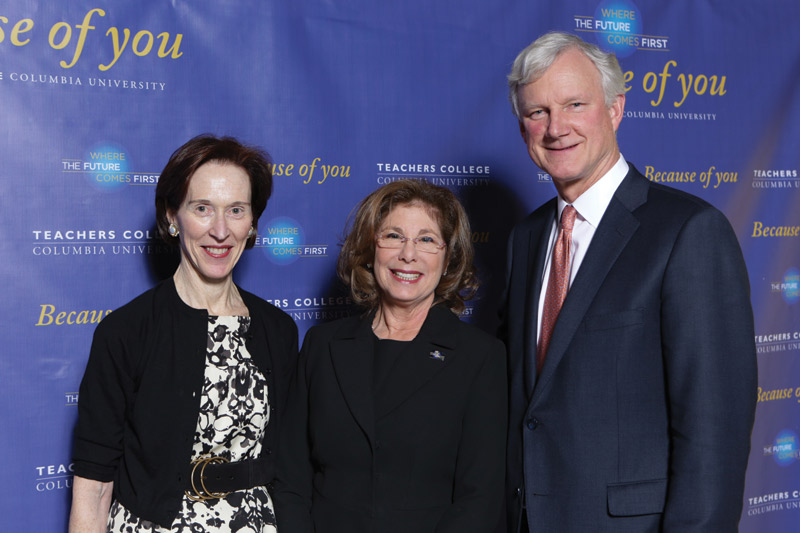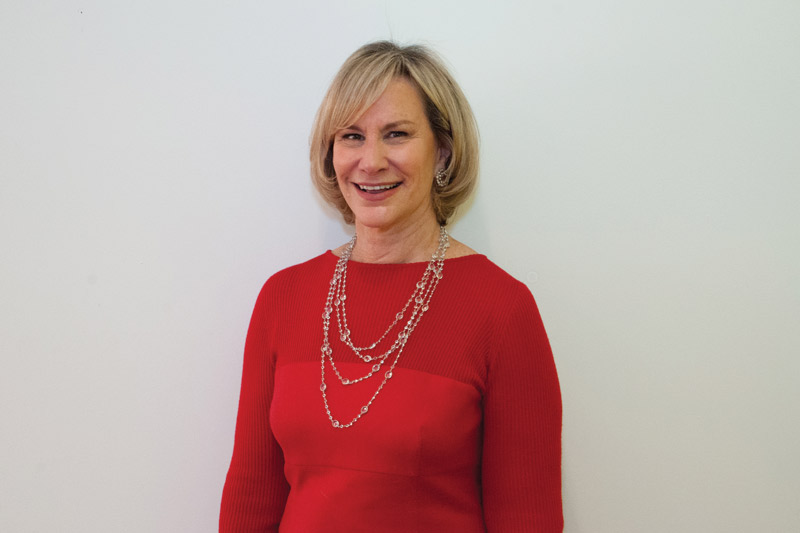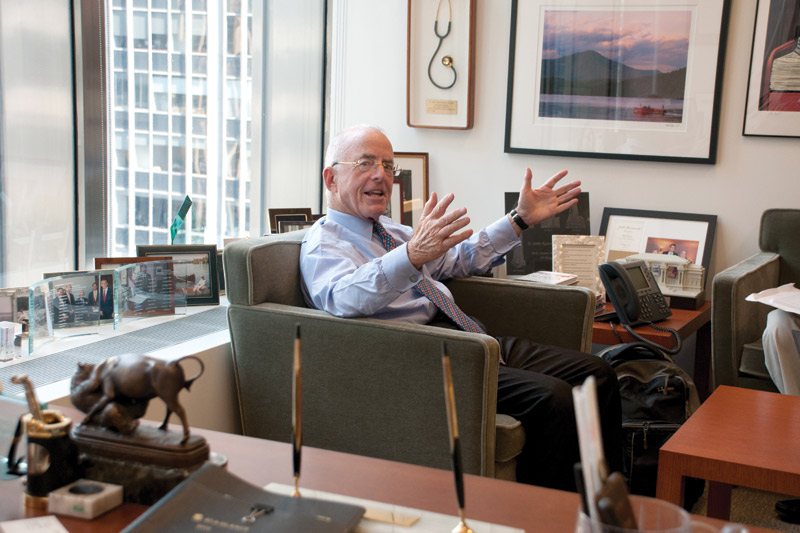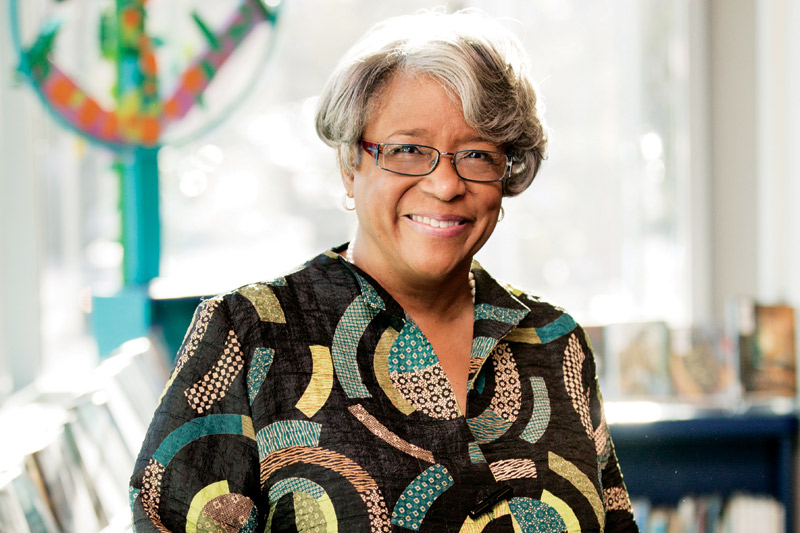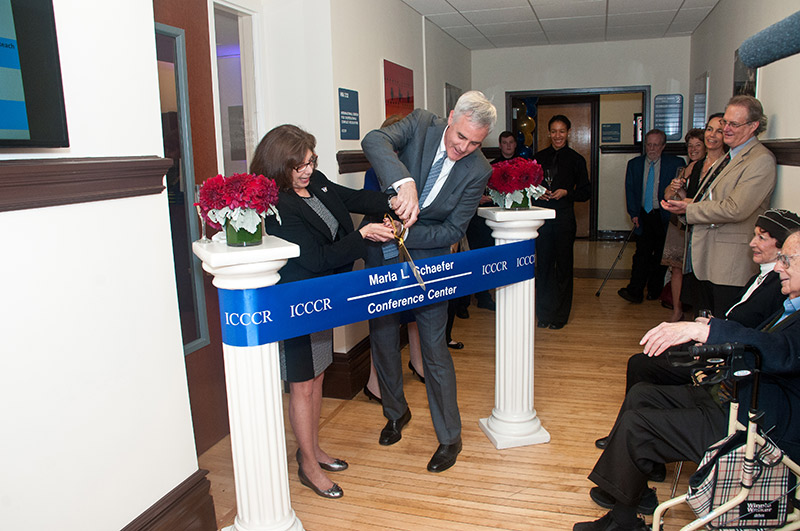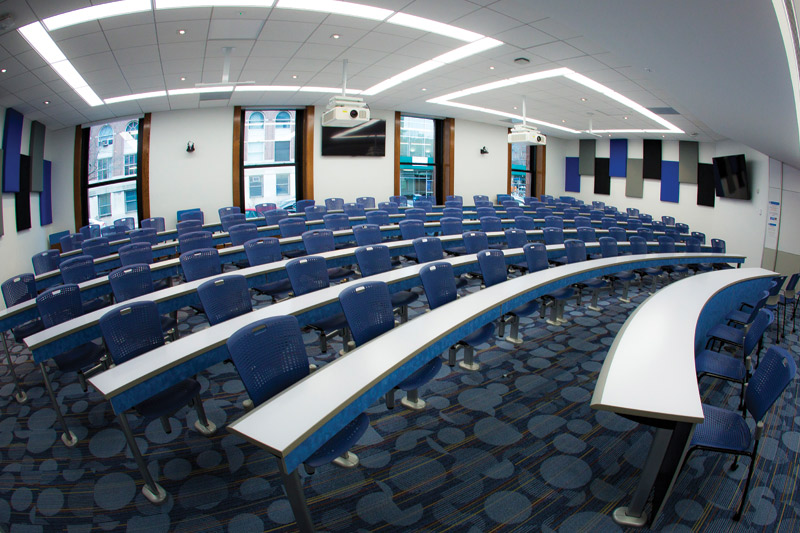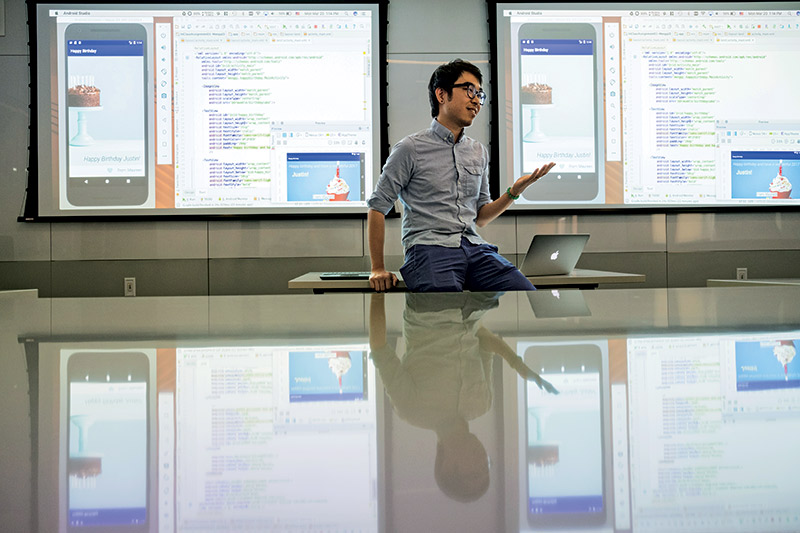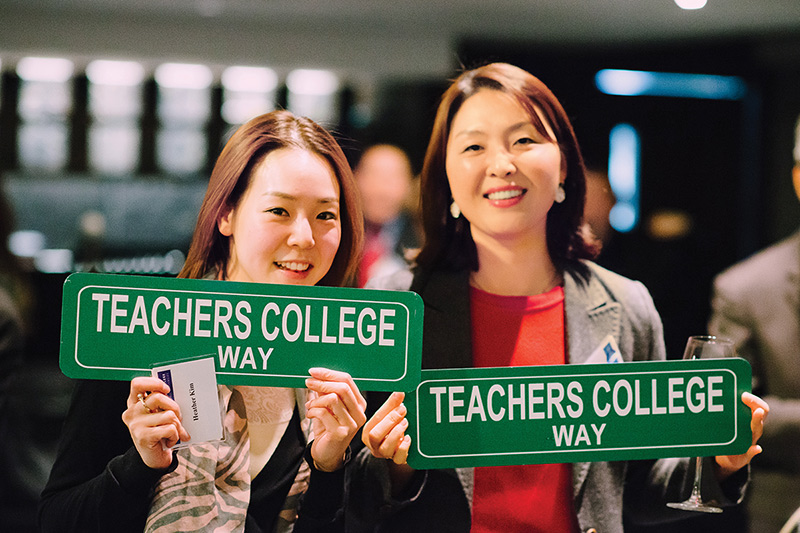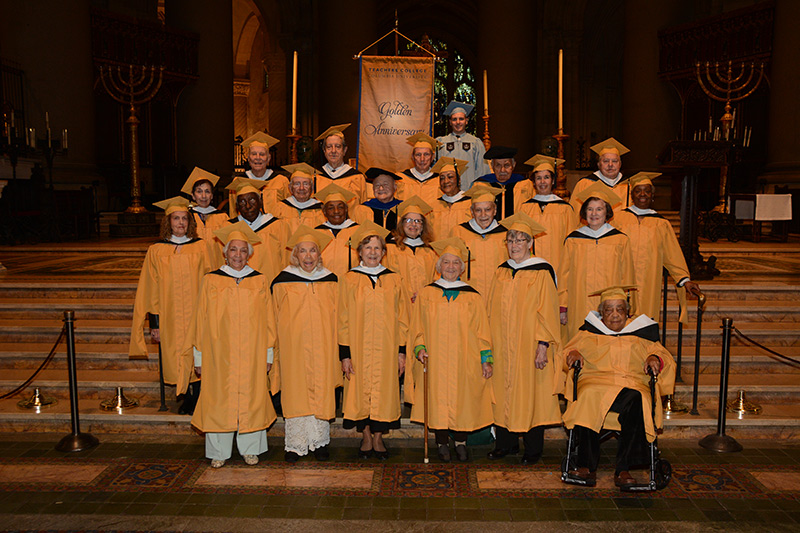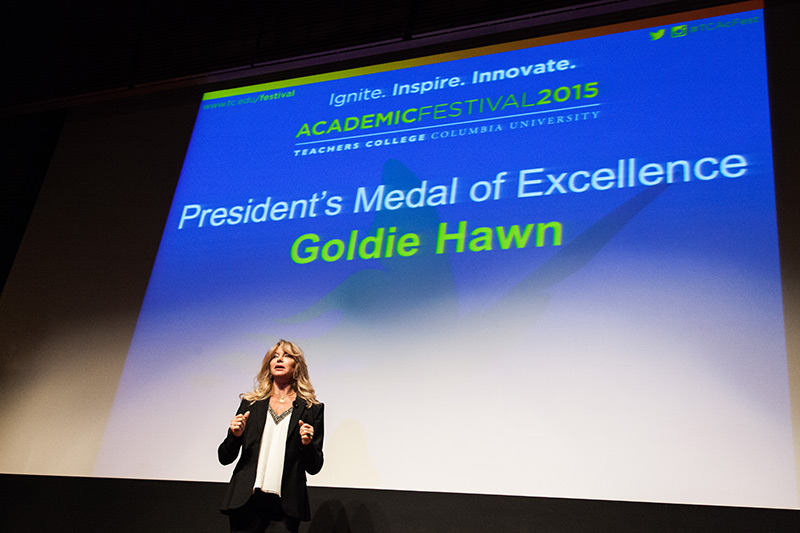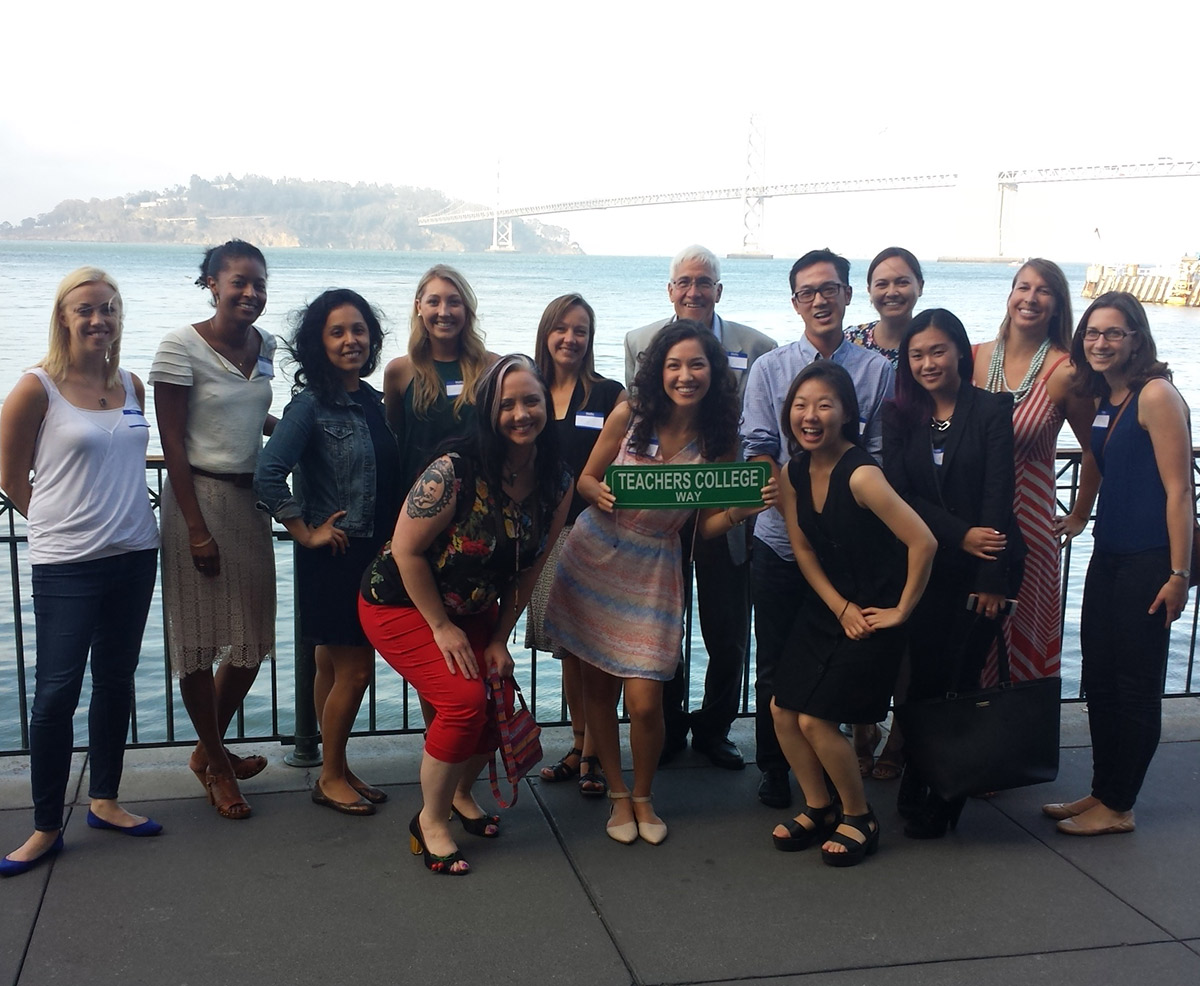Teachers College has closed the books on its historic Campaign, Where the Future Comes First. Addressing TC’s Board in early October, Suzanne M. Murphy, Vice President of Development & External Affairs, reported that the Campaign raised a total of $345 million, including $116 million in support for student scholarship. The Campaign also supported faculty programs through the creation of multidisciplinary centers, academic programs and initiatives and harnessed the power of productive faculty-sponsored research. It financed three floors of smart classrooms, construction of a state-of-the-art new learning theater and other upgrades to TC’s historic campus. It bolstered TC’s unrestricted financial flexibility by building the College’s Annual Fund and creating an academic seed fund for new initiatives for the here and now. And the Campaign also created record levels of alumni engagement and participation.
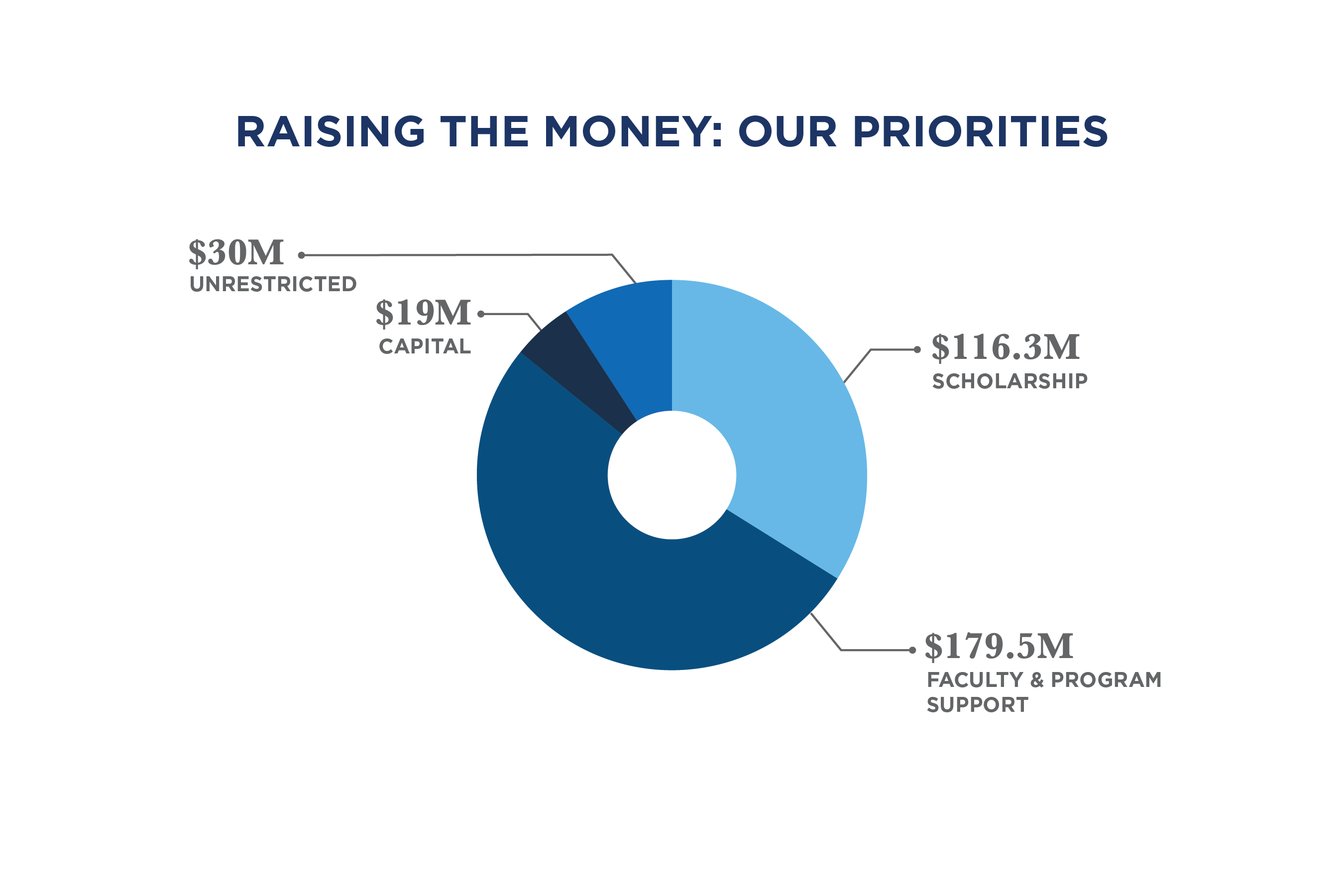
“This has been a campaign to strengthen a graduate school of education, health and psychology that, since its founding, has helped guide successive generations in confronting the challenges and opportunities that lie ahead,” says Murphy. “So the name Where the Future Comes First has worked on three levels: It has evoked TC’s legacy of forging new fields and creating brighter futures for students, schools, families and communities. It has focused our efforts to secure the College’s own future, so that our students, faculty and graduates can continue that work. And it has signaled that we’ve created a sustainable pipeline of donors who will support Teachers College for decades to come.”
[Read an interview with Suzanne M. Murphy about the Campaign’s impact.]
More than $238 million in Campaign funds has already hit TC’s books and is in active deployment, with the rest to be realized over the next several years – a balance that TC Trustee and Campaign Committee member Reveta Bowers believes is ideal.
“A campaign should be like an individual financial portfolio,” says Bowers, who for 43 years headed the internationally known Center for Early Education (CEE) in West Hollywood, California. “That is, it should reflect a balance of investments that pay returns in the present moment and those that seed future growth. And TC’s Campaign has done that exceptionally well.”
Campaign Results by Allocation
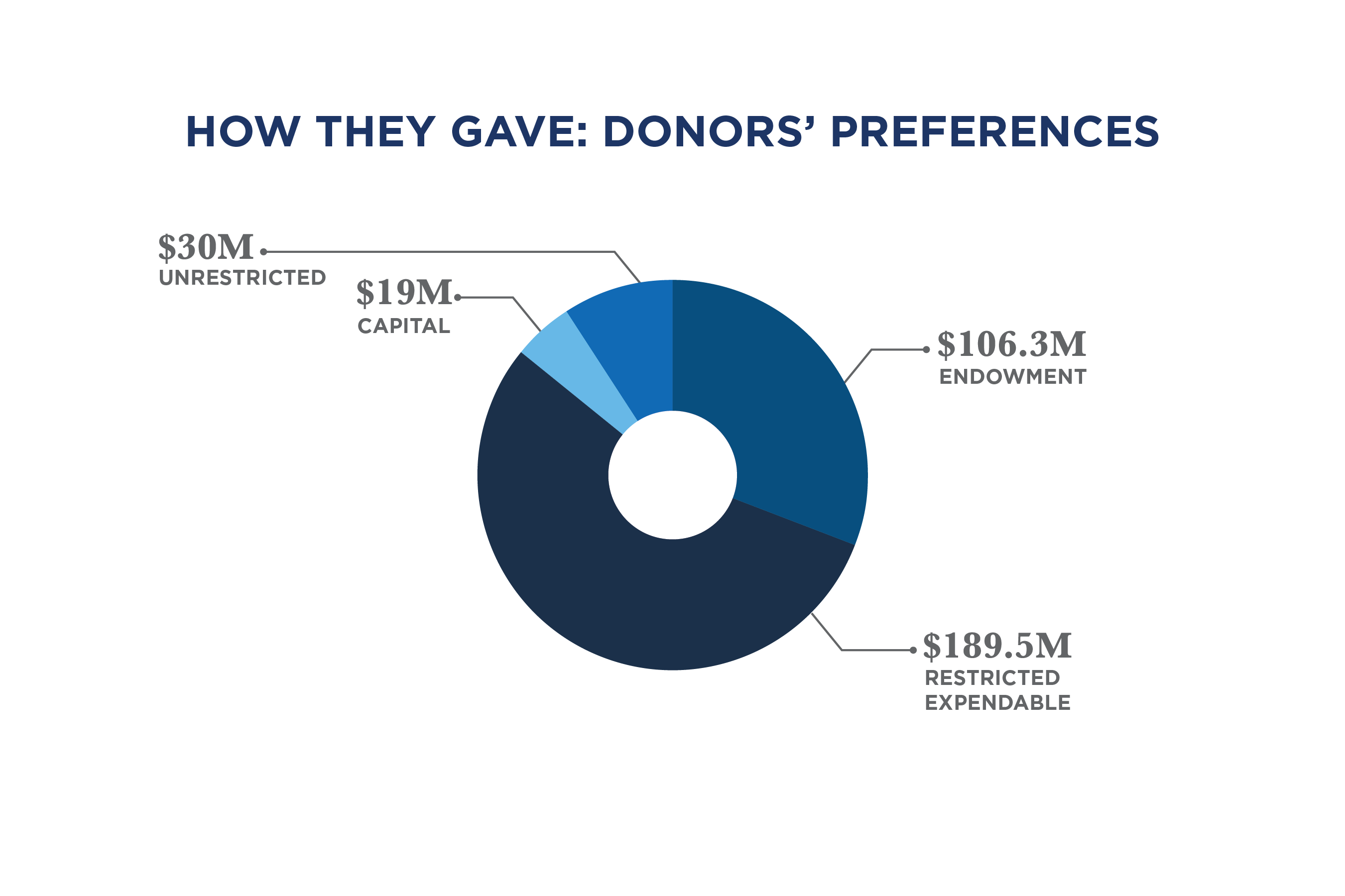
Planned, and publicly launched in Fall 2013, under the leadership of then-President Susan Fuhrman, Where the Future Comes First was far and away the largest campaign ever conducted by a graduate school of education. It surpassed its original $300 million goal back in December 2017 and more than doubled the total of the College’s previous campaign, concluded in 2004, which was also a record-setter.
“The last campaign benefited from a very generous group of trustees and friends,” says Murphy, “and we all knew that our success this time would depend on these loyal top donors once again setting the table and tone – which they did, big time. But we also saw an opportunity to cultivate broader and deeper support.”
That cultivation started with TC’s own Board and a challenge gift for capital improvement given in 2011 by Laurie M. Tisch, who, with E. John Rosenwald, co-chaired the Campaign during its quiet phase. “Part of building an institution’s future is ensuring that it will continue to increase its base of leadership supporters, rather than repeatedly relying on the usual suspects,” says Tisch, now Trustee Emerita. “I made my challenge gift with that goal in mind, and I’m very proud of the results. TC’s Campaign has energized all of our trustees while passing the torch to the new generation of trustee donors.”
Yet in many ways, TC alumni were the Campaign’s lead story.
“We have engaged alumni all over the world because they are our primary product, and we are enormously proud of them,” says Fuhrman, who stepped down in July.
“We saw an opportunity to wake the sleeping giant, and, using cutting-edge research tools, we did just that,” Murphy said. “We built a database that, for the first time, not only allowed the College to find and reconnect with tens of thousands of alumni, but also enabled us to determine their willingness and giving potential. The result was a true People’s Campaign. Ultimately, 40 percent of our individual donors to the campaign were alumni, compared with 15 percent in the last campaign. That, in and of itself, was a major accomplishment that will pay social and financial dividends for decades to come.”
“It wasn’t just about finding data,” Murphy adds. “The Development & External Affairs team seized on the data to connect with people and build relationships.”
Aiming High and Setting the Priorities
Indeed, it was the power and enthusiasm of this alumni base that convinced the Campaign’s leadership to set its $300 million target – a figure significantly higher than the one initially floated by consultants. Or as John Rosenwald repeatedly put it, “Sell the sizzle and not just the steak – make the case and people will follow.”
Central to that case were the Campaign’s priorities, which were set in their order of importance:
- Student Scholarship Support. “In a campaign called Where the Future Comes First, it was clear that, most of all, the future is embodied by our students, because they are the people who will go out and change the world,” says Fuhrman. “That’s why, during my presidency, I insisted that virtually every gift included a scholarship component – even program gifts. And funding students also supported our faculty, who rely on our smart, engaged and passionate students to work alongside them in changing and creating new practices and expanding our impact.” As a farewell, Fuhrman and her husband, Bob, established a generous charitable gift annuity, adding to the Susan H. Furhman Endowed Scholarship created by friends and colleagues.
- Faculty/programs. The focus here was to live up to TC’s legacy of innovation to meet society’s great challenges and opportunities. “Our faculty have their finger on the pulse of those issues for the 21st century, and our donors are informed and eager to make an impact,” Murphy says. “Providing them opportunities to come together in this Campaign was imperative.” The College’s major centers and institutes continued to flourish throughout the Campaign, even as new centers, programs and institutes took root. Corporations and foundations accounted for a significant portion of the funding, but so did alumni, who “funded their passions.” “We knew our alumni donors tended to gravitate toward supporting programs,” Murphy said. “People give to TC in line with the way they originally came to TC – by aligning their own interests with faculty strengths. So our role in development was really to serve as matchmakers who ensured that the right people were finding one another.”
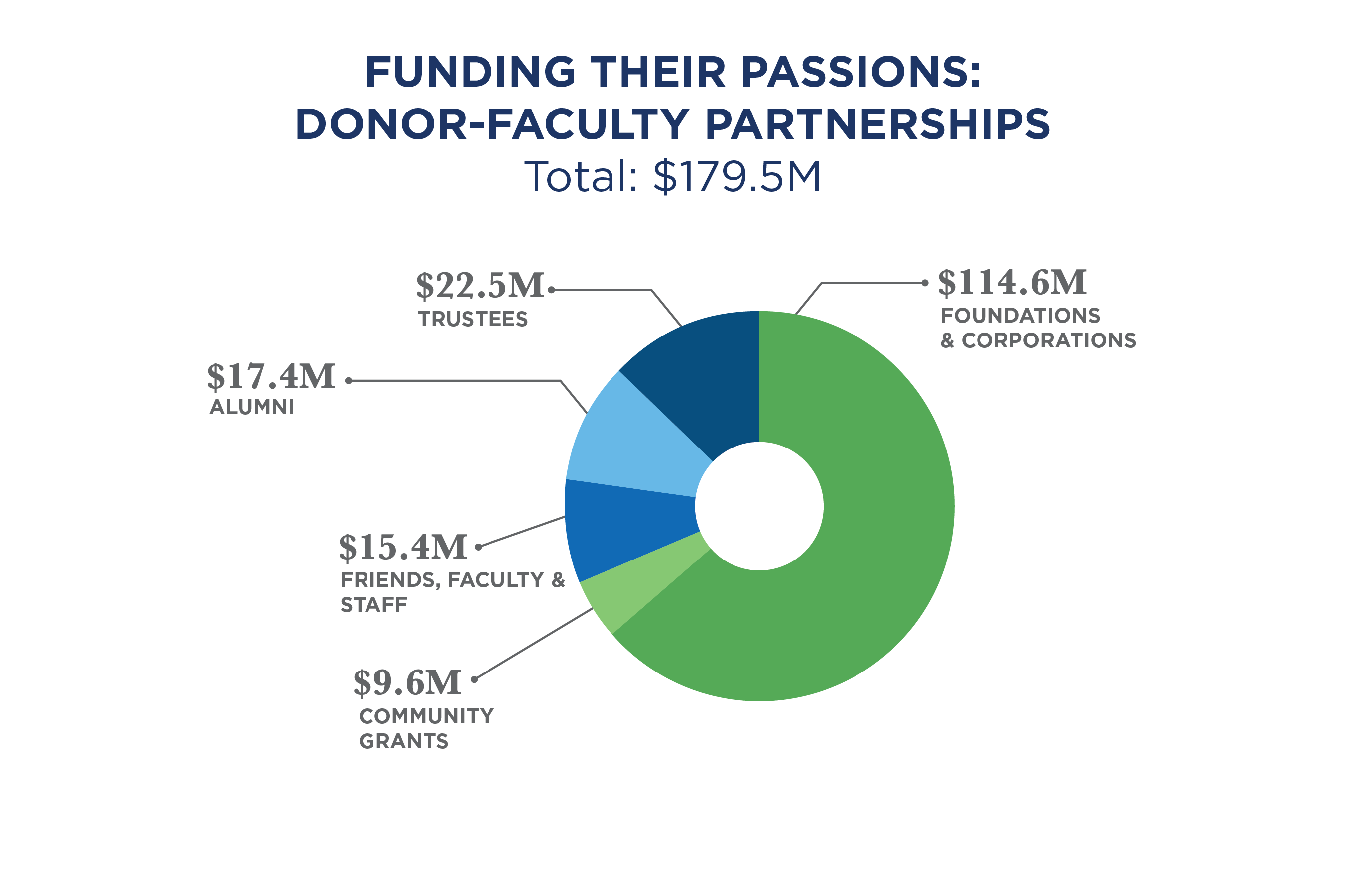
- A bright, welcoming learning environment is critical to attracting and retaining the best students and faculty. TC’s beautiful old buildings are architectural gems and among its most valuable assets – but there was no reason why “venerable” and “cutting edge” had to be mutually exclusive. “Everyone agrees that business schools and engineering schools should be state of the art,” Murphy says. “If these professional schools have appreciated the importance of cutting-edge learning environments, why should the country’s best graduate school of education have anything less?”
- Unrestricted Giving. Two central initiatives allowed TC to fund the here and now. One was to develop a sustainable Annual Fund program, built on renewable and replaceable gifts, that created points of entry for donors at all levels. The other was an Academic Seed Fund for innovative faculty collaborations.
- Alumni Engagement. The College’s 90,000 alumni are its best ambassadors, wielding enormous influence in diverse fields and offering TC their time and talent as well as their treasure. Thus the Campaign re-envisioned TC’s Office of Alumni Relations to create a worldwide presence aimed at fostering lasting and meaningful relationships with alumni and increasing and strengthening alumni engagement through the strategic implementation of alumni data, communications and events.
“The mission of the Alumni Council is to reconnect alumni with the College and connect or reconnect them with each other, and that has expanded exponentially during TC’s Campaign,” says Marion Boultbee (Ed.D. ‘96), President of the Teachers College Alumni Council. “We have seen a huge increase in alumni engagement – a real explosion in the number of regional groups and the international alumni network. And of course, the big increase in alumni donors since the last campaign is something that we should be shouting from the rooftops.”
What the Campaign Enabled
So how did the Campaign do? The results, for each priority, tell a success story that is uniquely TC.
Donors were passionate about supporting TC’s students, contributing $116.3 million in scholarship support. Many of TC’s first-time alumni donors chose scholarship as the venue for their gifts, in many instances inspired by the College’s scholarship match campaign. In a particularly strong sign of commitment, the majority of new scholarship gifts were made at the $100,000 level, and more than 21 percent of the total raised was designated for teacher preparation. In all, more than 150 new restricted and endowed scholarship funds were established during the Campaign. Donors also came back to TC and continued to grow their already established scholarship funds, deepening their impact at the College.
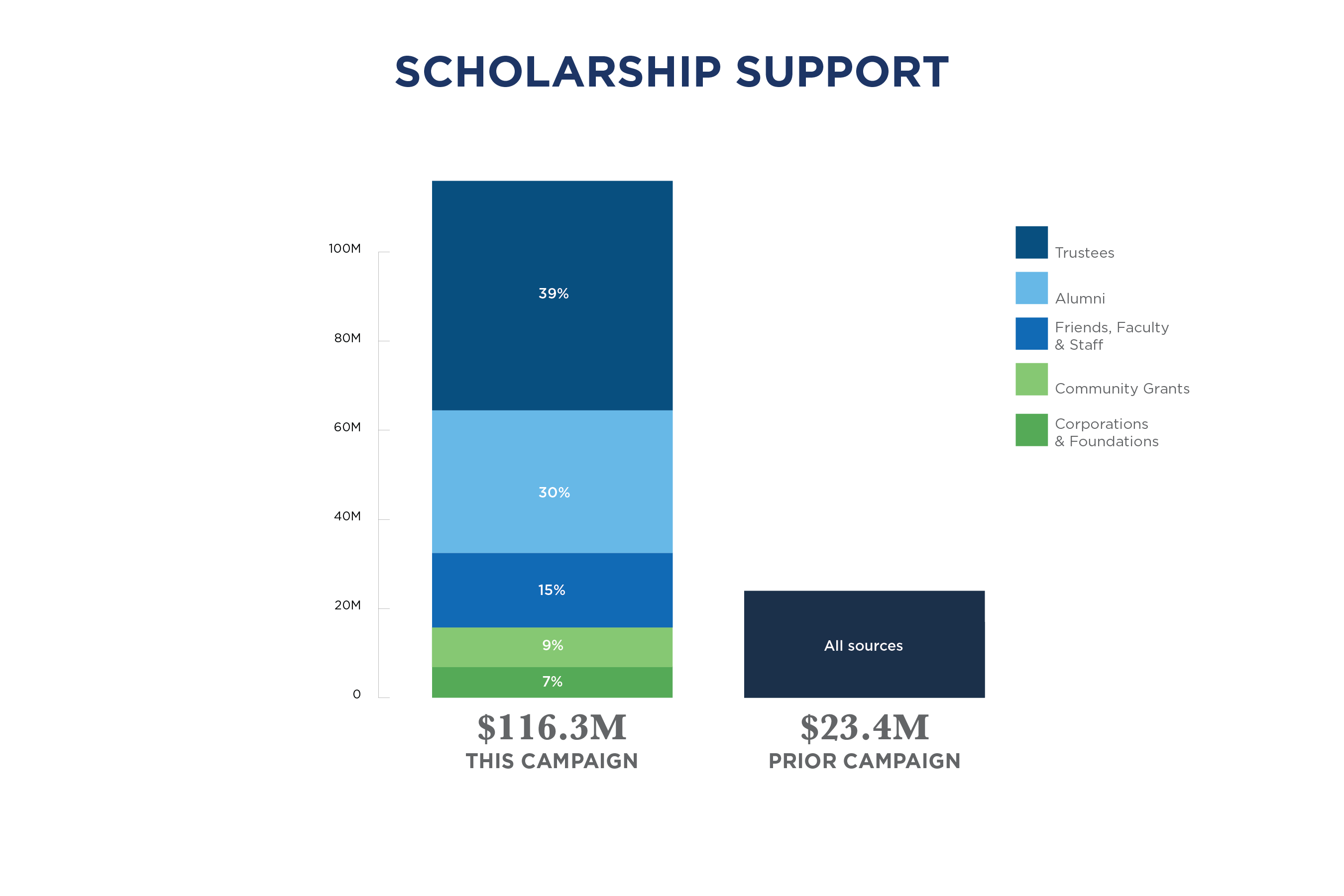
Seventy-five percent of scholarship support was endowment giving, while the rest was in the form of outright gifts.
“When you combine the endowment and outright scholarship giving, we’re proud that we have gifts that support students today while others are building for a stronger future,” Murphy said.
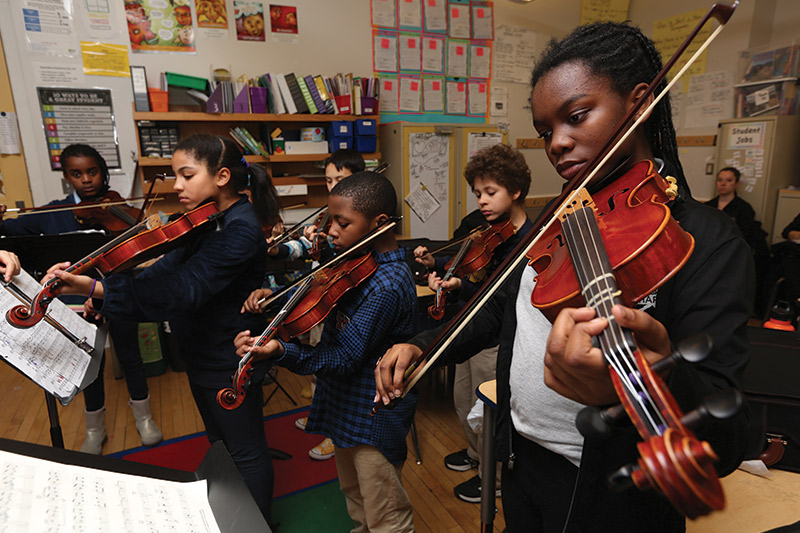
GOOD NEIGHBOR The Campaign enabled TC to launch the Teachers College Community School, a pre-k–8 public school in West Harlem.
TC forged an especially powerful connection with its donor base around faculty and program support, raising $179.5 million. Some 30 percent of the money raised for faculty and program support came from individual donors, supporting new centers, programs and research in nutrition, financial literacy, psychological resilience, dance education, school-based mental health, school leadership, and professional development for teaching artists, as well as the Teachers College Community School (TCCS), a preK-8 public school in West Harlem. The latter grew out of a priority driven by Susan Fuhrman during her presidency to improve schools in TC's surrounding community through close working partnerships. The College created TCCS, which in turn anchored a network of partnerships with other local schools.
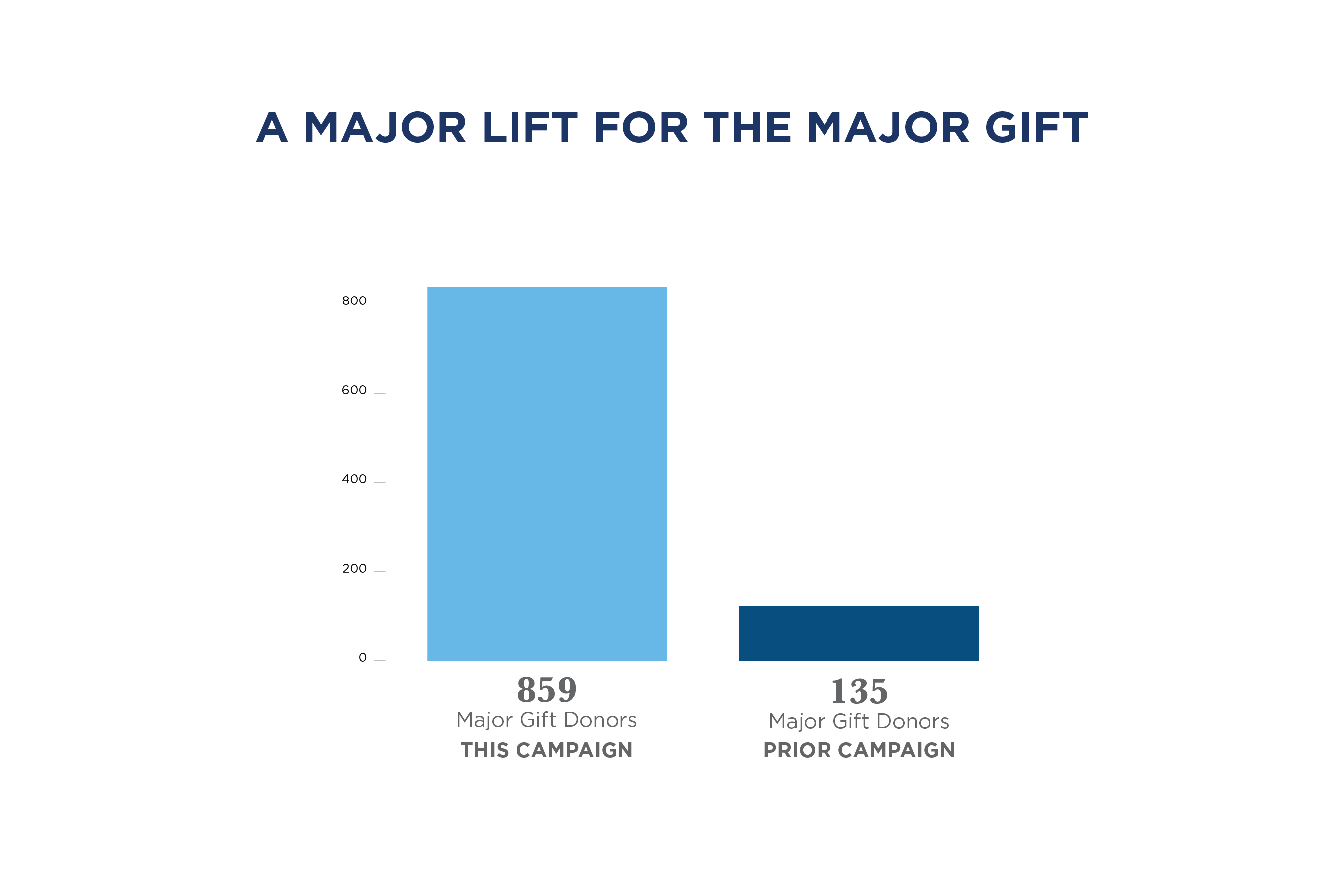
At the same time, foundations and corporations were powerful contributors. Roughly one-third of their contributions supported the continued growth of three prominent TC centers: the Community College Research Center, the Hechinger Institute on Education and the Media, and the National Center for Restructuring Education, Schools & Teaching (NCREST). Other lead foundation gifts supported TC’s school partnerships and its work on early childhood education.
Gifts to enable capital improvements were specifically targeted to support teaching, learning and research. Thanks to the Campaign, the College has launched its new Laurie M. Tisch Center for Food, Education & Policy; built the new Smith Learning Theater in its Gottesman Libraries and the new Dawn and Ric Duquès Auditorium in Thompson Hall; and renovated the headquarters of its Morton Deutsch International Center for Cooperation and Conflict Resolution. TC is also midway through creating three floors of smart classrooms in Grace Dodge Hall and will soon renovate its Rita Gold Early Childhood Center.
Unrestricted giving – totaling $30 million in funds directed to the TC Annual Fund and an Academic Seed Fund – was a strategically important piece of the Campaign pie.
Financial flexibility allows the College to plan for the future while supporting current students, faculty and programs and addressing opportunities and needs as they arise.
“While the Annual Fund operation generates a small fraction of the College’s yearly fundraising revenue, its impact cannot be overstated,” Murphy says. “The best way to think about it is by imagining what it would mean if we had to back out that $30 million from our operating budget. What things couldn’t we do to support our students, our operations and our faculty? So we decided to set our goals high and focus on fostering a traditional Annual Fund that would offer donors an opportunity to get accustomed to giving annually, to give at any level, and ultimately to build an annual giving effort that feeds our pipeline of leadership donors. We also created an academic seed fund to promote innovation and interdisciplinary academic work.”
The results exceeded all expectations. TC increased dollars raised for the Annual Fund by 76 percent. Dewey Circle Membership (gifts of $1,000+) increased by 57 percent, with a 47 percent increase at the $1,000 level and a 156 percent increase at the $2,500 level. The retention rate of donors to the Annual Fund increased by 18 percent and the number of annual donors increased by 20 percent – a trajectory expected to continue. Meanwhile, academic seed funding has fueled the Provost’s Investment Fund, Rapid Fire grants, and other key academic initiatives and promising faculty work. The Provost’s Fund alone has launched hundreds of multidisciplinary faculty projects, including many that have made a national or even global impact in areas such as financial literacy and global mental health.
Alumni around the world rallied to TC’s banner.
During the Campaign, spurred by programming by the Office of Alumni Relations, alumni created 16 regional alumni groups in the United States and nine more worldwide. TC increased the number of alumni email addresses on file by more than 230 percent and alumni employment data by more than 106 percent, and decreased its “lost alumni” by 33 percent.
The College is now holding more than 80 alumni events annually, up from nine in 2009, complemented by a suite of strategic programs and virtual offerings. Academic Festival has grown from a poster session with 80 attendees to our signature homecoming event that brings together the entire TC Community to showcase the depth and breadth of TC’s academic expertise. It now draws more than 1,500 attendees. And Global TC Day, a biennial event launched in 2013, takes place in an average of 40 locations worldwide.
Thousands of first-time alumni attendees came to these gatherings each year, including younger leaders and volunteers recruited by the Alumni Council and the 21st Century Leaders initiative.
In addition, the President's Medal of Excellence and the President’s Award of High Distinction, created in 2010, now complement TC’s Distinguished Alumni and Early Career Awards.
Thinking about today AND tomorrow: endowment giving
Again, while the Campaign has already made an enormous impact on TC’s current work, it also has powerfully strengthened the College for the future.
“The College purposely did not set an endowment goal because, with donors’ proclivity to give to specific programs and initiatives and because, in many instances, we were just getting to know these folks, we wanted to follow donors’ wishes and interests,” Murphy says.
“There is something for everyone at TC,” adds Campaign Vice Chair and TC Trustee Leslie Nelson. “The College always has a match for what people love and feel strongest about.”
In the end, the College added $106 million to its endowment and grew the endowment’s unrestricted net assets from under $110 million in FY11 to over $160 million in FY17. Seventy-five percent of the total raised to support student scholarship was allocated to the endowment in the form of outright, pledged and planned gifts. That money isn’t yet having a day-to-day impact, as, according to accepted prudent use standards, annual spending from TC’s endowment does not exceed five percent. Rather, it comprises assets that are invested to provide a reliable source of income for future spending.
“And that’s really what ensures that an institution will continue to thrive, grow and be a force in perpetuity,” says Murphy.
As part of that effort, she adds, the College built a strong planned giving program. “While our early database research uncovered lots of potential donors across generations, our current donors skewed older and were more inclined to make planned gifts and blended gifts [contributions that combine outright and planned gifts]. So we felt that with a more strategic and focused effort, we could greatly accelerate a planned giving program that would benefit TC for years to come.”
Murphy says she was fortunate to have “an ideal ambassador” for such an effort in Board Chair Bill Rueckert, a descendant of TC’s founder, Grace Dodge, and chair of the Grace Dodge Society.
Frequently citing the example of Dodge’s bequest to TC, realized at her death in 1914 and still paying dividends, Rueckert led efforts to increase membership in the Grace Dodge Society. He also championed a blended giving program, through which donors make both an outright gift and include TC in their estate plans. One particularly striking example: the largest single contribution to the Campaign, a $20 million blended gift from John and Pat Klingenstein (which will be realized this year) to support TC’s Klingenstein Center for Independent School Leadership.
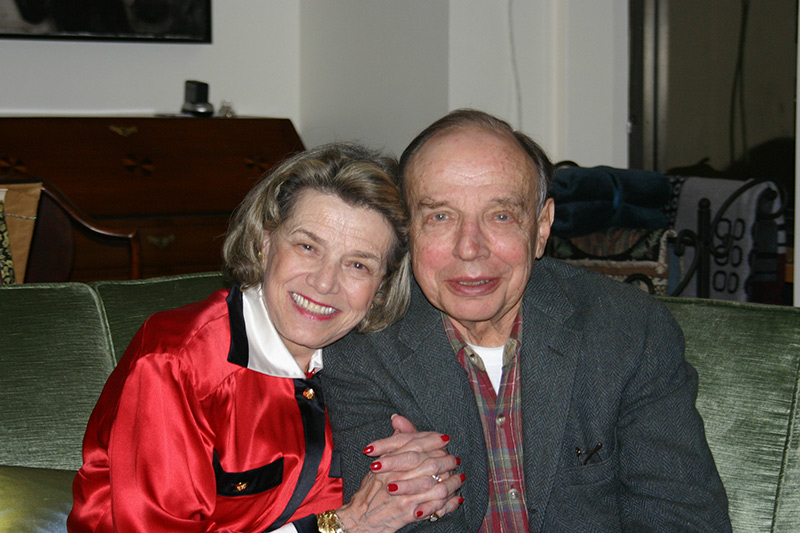
STAUNCHEST SUPPORTERS The late John Klingenstein and his wife, Pat, have been the most generous donors in TC's history.
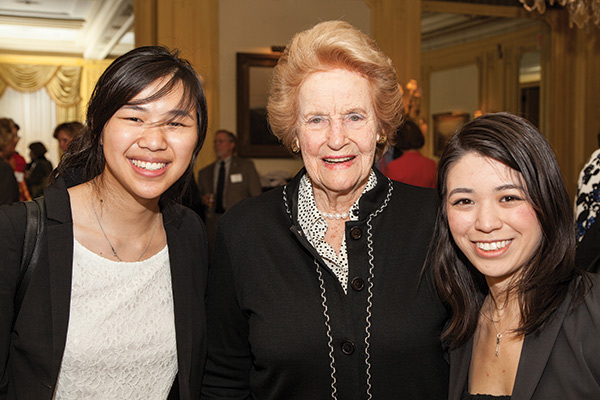
BANKING ON TEACHERS The late TC Trustee Emerita Abby M. O'Neill (center) funded a fellowship program to keep the best teachers in New York City.
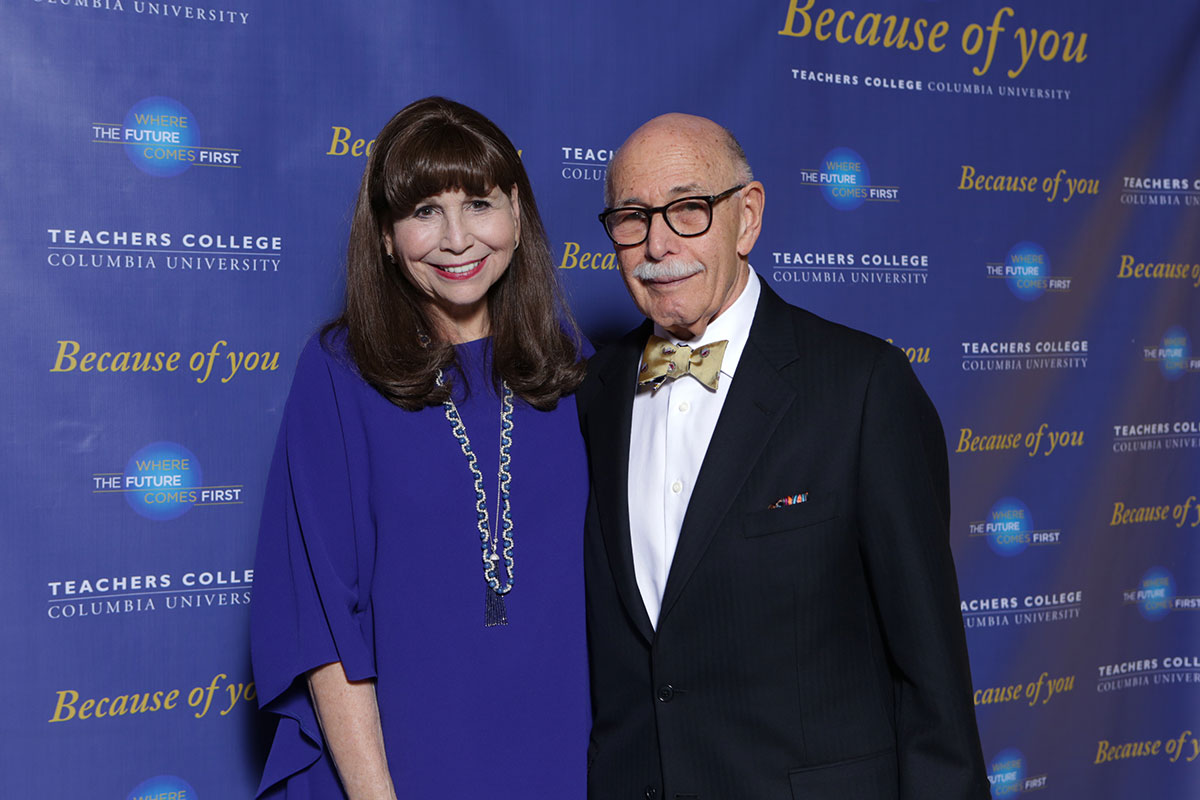
FAREWELL GIFT President Emerita Susan Fuhrman and her husband, Bob, established a charitable gift annuity to provide student scholarship support.
Stewarded by Rueckert, another trustee created a fellowship program to support aspiring New York City teachers. Following her initial seed gift, faculty had the opportunity to shape the fellowship and to provide feedback to the donor and her family. A pilot of the fellowship was so successful that the trustee ultimately made a $10 million bequest to expand the fellowship in perpetuity.
“That bequest was recently realized, the donor’s wishes are being implemented and TC students are being supported,” Murphy says. “Thanks to an impassioned donor and a creative chair of our Grace Dodge Society, New York City soon will have a new crop of well-prepared teachers committed to teach in New York City, free of debt.”
Other Grace Dodge Society members chose to “pay it forward” through a planned giving program that enables them to experience the joy and satisfaction of supporting TC students now. Nearly 10 percent of new Grace Dodge Society members participated in that program, resulting in many new scholarship funds that support students today and will receive guaranteed infusions in the future.
A College Transformed
So how is Teachers College different today?
The Campaign magnified all of the College’s key strengths, both in building a community that will provide ongoing support, and as an academic institution.
“We hit a home run in building a growing and sustainable donor pipeline that will nourish TC for decades to come,” Murphy says. “We went from having 135 major donors in the prior campaign to 859 in this campaign, more than a fivefold increase. Some of our largest donations were from newly found and cultivated alumni. We expanded our donor base at every giving level, recruiting a terrific new group of generous trustees who are being groomed by our most tenured ones, and we have enjoyed particular success with the mid-level major gifts donors, which I would call a sweet spot for TC alumni. And the College’s academic programs are immeasurably stronger as well.
"More broadly, we generated enthusiasm, encouraged participation, and engagement, and built an even more strategic and comprehensive development program that positions the College for further growth. And that's what it's all about.”

